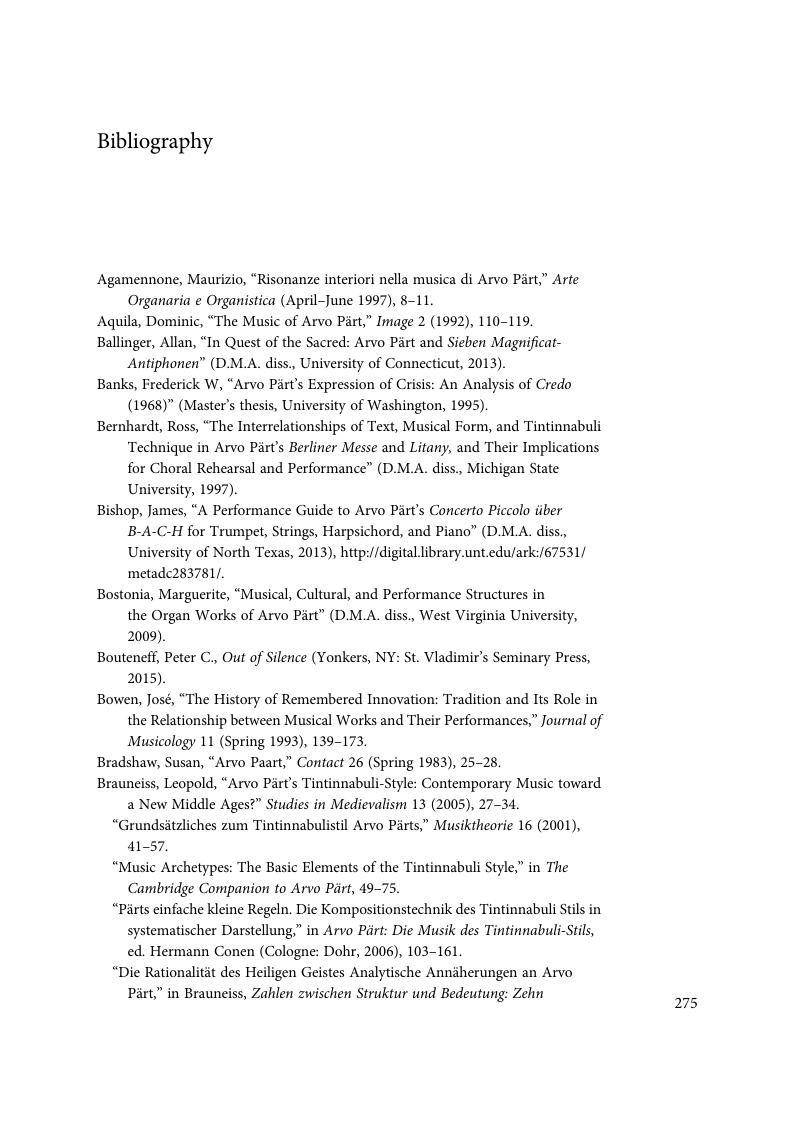Book contents
- Arvo Pärt’s Resonant Texts
- Arvo Pärt’s Resonant Texts
- Copyright page
- Dedication
- Contents
- Figures
- Tables
- Music Examples
- Preface
- Acknowledgments
- Author’s Notes
- 1 Prelude: Resonant Texts
- 2 Credo: 1956–1976
- 3 Interlude: Audible Light
- 4 Passio: 1976–1982
- 5 Interlude: The Numinous Encounter
- 6 Kanon: 1982–1997
- 7 Interlude: Performance Practice
- 8 Lamentate: 1997–2003
- 9 Adam’s Lament: 2003–2015
- 10 Postlude
- Book part
- Bibliography
- Index
- References
Bibliography
Published online by Cambridge University Press: 20 April 2018
- Arvo Pärt’s Resonant Texts
- Arvo Pärt’s Resonant Texts
- Copyright page
- Dedication
- Contents
- Figures
- Tables
- Music Examples
- Preface
- Acknowledgments
- Author’s Notes
- 1 Prelude: Resonant Texts
- 2 Credo: 1956–1976
- 3 Interlude: Audible Light
- 4 Passio: 1976–1982
- 5 Interlude: The Numinous Encounter
- 6 Kanon: 1982–1997
- 7 Interlude: Performance Practice
- 8 Lamentate: 1997–2003
- 9 Adam’s Lament: 2003–2015
- 10 Postlude
- Book part
- Bibliography
- Index
- References
Summary

- Type
- Chapter
- Information
- Arvo Pärt's Resonant TextsChoral and Organ Music 1956–2015, pp. 275 - 284Publisher: Cambridge University PressPrint publication year: 2018



